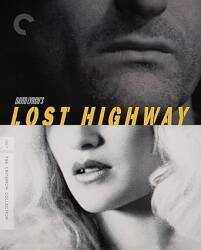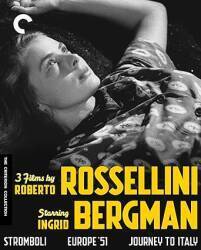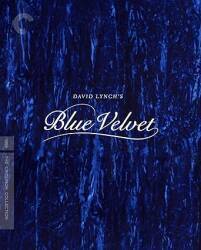
Stromboli
Relaxing on Stromboli
I had arrived on the
volcanic island of Stromboli
via ferry
and trudged through a rainstorm to find my lodging,
despite the efforts of Booking.com to send me into
a rain-soaked garden.
My room at Pedra Residence
included free breakfast and discounts on other meals
at the Ingrid cafe
on the edge of Piazza San Vincenzo,
the main square of the town.
The plaza and the cafe overlook the sea
where the main lane from the pier loops around the church
before continuing through town to the northwest.
Here's my usual breakfast,
cornetto e doppio caffè .

The view out to sea and Strombolicchio, about 1.5 kilometers out.

And, the view northwest across town, looking toward where I was staying.


Chiesa di San Vincenzo Ferreri
Chiesa di San Vincenzo Ferreri, the Church of Saint Vincenzo Ferreri, faces the plaza, with the main street looping around its entrance. The church was rebuilt in the 19th century. The view above is looking across the plaza to the church, with the peak of Stromboli hidden by clouds beyond it.


Vincenzo Ferreri was an apocalyptic-minded Dominican priest originally from Valencia, in Spain.
Ferreri was affiliated with the Crown of Aragon, who decisively sided with the Avignon Pope at the Papal schism of 1378 when multiple men claimed to be the Pope. There were competing Popes in Rome and Avignon from 1378 to 1417, with a third simultaneous pope in Pisa from 1409 to 1417. Ferreri became personal confessor and advisor to Benedict XIII, one of the Avignon Popes.
A spiral staircase in the narthex leads up to the balcony. A narthex or νάρθηξ is the entrance or vestibule to a church, at the opposite end from the altar.


Ferreri became increasingly fixated on the Antichrist, who he believed had been born in 1402. Ferreri traveled through Castile, Aragon, and Catalonia while stirring up anti-Jewish riots.
The church is a basilica design, with rows of columns dividing the central nave from side aisles with lower ceilings.


The main altar is in the central apse.
Smaller altars are in the apses of the aisles.


A pipe organ is in the balcony above the narthex.
A chapel at the rear of the left aisle is dedicated to Padre Pio, a priest, stigmatist, and mystic who is enormously popular in Italy.
In addition to the stigmata which was said to smell like perfume or flowers, he is credited with an ability to bilocate (a theme in David Lynch's "Lost Highway"), experiencing celestial visions, communicating with angels, and having physically fought Satan and demons.
The Vatican was initially skeptical of his stigmata and claimed abilities, and in the 1920s attempted to restrict his publicity. There was some wiretapping, a traditional feature of Italian controversies through the 20th century. Pope John XIII (1958–1963) was extremely skeptical of Padre Pio. Then Pope Paul VI (1963–1978) dismissed all the accusations against him in the mid 1960s. In 1999, Pope John Paul II declared Padre Pio to be a saint. He may have been a bit of a hoaxster and a scoundrel, but he did inspire popular piety.

Around the Village
This is the main road through the village, coming up from the ferry pier to the main square.




Gaps between the buildings provide views up to Stromboli.
Magma is a mix of molten and semi-molten rock with gases dissolved in it. It's like carbonated beverages — soft drinks, seltzer water, sparkling wine — the gas comes out of solution when the container is opened. If enough gas is in solution and the pressure within the container has become high, the resulting release may be violent. When most of the original gas content has been released, the remaining molten and semi-molten rock is called lava.
Stromboli's basaltic magma is rich in silica, making it more viscous. It doesn't flow easily, so it builds a steeper cone and is called a stratovolcano, referring to its steep cone with many layers. A volcano with less viscous magma is called a shield volcano because its softer lava easily flows out, forming a very broad and not at all steep shield-shaped cone.
Stromboli has frequent emissions of lava, sometimes in fountains reaching hundreds of meters in height, and it also ejects lava bombs, clumps of molten rock that partially harden in flight. Strombolian became the standard term for this volcanic behavior. Compare that to the Vulcanian behavior of Vulcano, where I had been before continuing to Stromboli, in which there are series of loud explosions launching lava bombs along with ash and pumice, but the explosive episodes are spaced widely in time between periods of gas emissions releasing pressure.
The Italian volcanoes are driven by the African Plate moving north and sliding beneath the Eurasian Plate. The below screenshot of an earthquake and volcano alerting smartphone app shows faults around Sicily and the volcanic Aeolian islands. Stromboli, the northernmost Aeolian island, is red, along with Etna on Sicily, indicating that it's erupting. Vulcano is the yellow one, indicating volcanic unrest. Lipari is green, indicating that it's dormant. The green one to the northwest is the Marsili seamount, a dormant submarine volcano. It's about 3,000 meters tall, but its peak is about 450 meters below the surface. The dark grey ones are thought to be extinct.
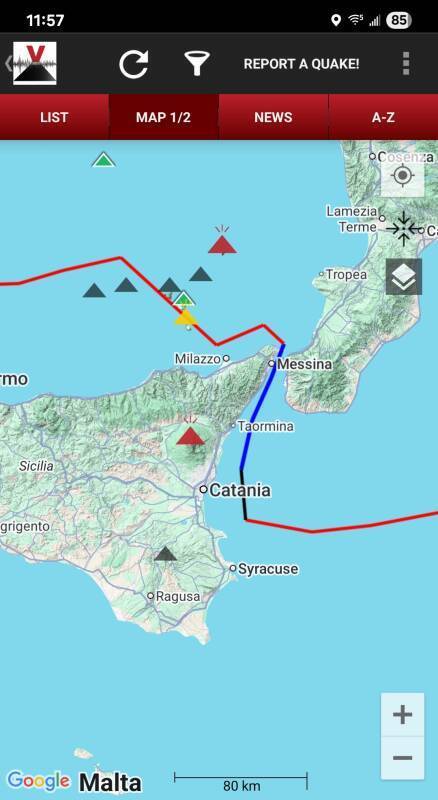
Roberto Rossellini came here to make his 1950 film Stromboli.
He had originally planned to have Anna Magnani, with whom he was having an affair, play the lead role. But then Ingrid Bergman wrote a letter to Rossellini praising his films and saying that she wanted to make a film with him.
Rossellini dropped Magnani from his film and his love life, and took up with Bergman. She divorced her husband, and Rossellini got his marriage annulled. Stromboli was filmed on Stromboli.
Meanwhile, Magnani set up the production of the film Vulcano on the nearby islands. Directed briskly by William Dieterle, it managed to reach theaters two weeks before Stromboli was released.

Ingrid Bergman's home became a local landmark. It's along the main street between the main square and where I stayed

Americans flew into a moral panic because Rossellini and Bergman were creepy foreigners and not properly-behaving Americans like Spencer Tracy and Katharine Hepburn. A U.S. Senator denounced Bergman as "a public concubine", Rossellini was dismissed as a sex-crazed Latin predator. Legislators in over a dozen U.S. states called for the film to be banned.
Bergman and Rossellini's children included Isabella Rossellini, who played Dorothy Valens in "Blue Velvet", thus continuing the unexpected David Lynch theme.
Stromboli is considered to be a classic example of the Italian Neorealism genre. Most of the cast were villagers on Stromboli. The volcano started a period of violent eruptions, and Rossellini worked that into the film.
I liked the documentary-style scene with the tuna, and the volcanic eruption was exciting, but otherwise it's a grim story. If only Sergio Leone had made A Fistful of Lava or maybe Once Upon a Time on the Volcano.
A plaque on the house reads:
This house was home to Ingrid Bergman who, with Roberto Rossellini, filmed the movie Stromboli in the spring of 1949.

The sand is black, formed from the basalt lava.

The steep cone shape of the volcano rises directly out of the sea around most of the shoreline, as seen in the distance here.

The town is on the northeast side of the island, in the only significant gently-sloping area.

I returned to the Ingrid cafe, named for Bergman, for lunch.

Max, the owner, was there as usual. In the distance, a large ferry was headed towards Napoli.

I had an arancini, a rice ball rolled in bread crumbs and deep-fried. The name is derived from a diminutive term for "orange", which one resembles in shape, size, and color.


Sometimes an arancini is round like an orange, sometimes it's more conical like a volcano. On Stromboli, they're conical like the island.

This one was ragu, with meat and peas.

Approaching sunset, I had an almost cloud-free view of Stromboli from my upper terrace.

Iceland
In Jules Verne's "Journey to the Center of the Earth", the protagonists enter Snæfellsjökull, a volcano north of Reykjavík in Iceland. After adventures in the fictional Hollow Earth including being chased by dinosaurs, they emerged here on Stromboli. It started a trend of dinosaur adventures in the Hollow Earth including Arthur Conan Doyle's "The Lost World" and Edgar Rice Burrough's "At the Earth's Core" and his "Pellucidar" series of novels.

Strombolicchio or "Little Stromboli" is an ancient volcanic plug sticking up out of the sea about 1.5 kilometers off the northern shore of Stromboli. It's what remains of the first phase of Stromboli's development, from about 200,000 years ago. The current main island began forming about 100,000 years ago, slightly to the south. Now Strombolicchio is home to a solar-charged battery-powered lighthouse and a nature preserve.

I walked back to the church and the main square, and on down to the ferry pier.



I had another arancini at a cafe by the ferry pier.



On another evening at the Ingrid cafe, I had a stromboli. It's a form of calzone, like a folded pizza with cold cuts, cheese, and mushrooms.

So Italian! Well, somewhat. The stromboli seems to have been developed by Sicilian-Americans in the Philadelphia area, then back-ported to Sicily. But I was on Stromboli and so I had to have a stromboli.

Then it was a dark walk each evening to get back to where I was staying. There are no streetlights on the island. A few guesthouses have a small light by the door, and that's about it.
Then it was another pleasant day of relaxing on Stromboli.

It was clear to the north, past Strombolicchio.

Then, 90 minutes later, a storm was developing as it passed several tens of kilometers to the north.


Someone on Stromboli apoligized to me for not speaking good English. Oh no, it's just fine for the task at hand, and I don't know any Italian beyond greeting, "please", "thank you", and similar basics.
Well, she had thought that she was going to get much better at English as used in touristic settings. She had gone to the U.S. for what had been described as an elite course from a respected U.S. university. But she ended up in a training course in a room in an office building on the outskirts of Reno. The course was conducted entirely in Mexican Spanish, and it was about how to supervise a cleaning staff from Mexico.

Just before sunset, Stromboli began venting some steam and ash.


The main vents are to the northwest of the peak, not visible from the town. As seen from the town, much of the volcanic cone is green now, with dark cinders up near the peak. Seen from other directions, Stromboli is mostly cinders from the shoreline to the peak.

I had shrimp and pasta on my last night on Stromboli.


Departing Stromboli
It was time to leave. I packed my things and had the below view of Stromboli as I headed toward the main square.

... and on down the main lane to the ferry pier.

I had purchased my ferry ticket the day before at the office near the pier, on the right here.

Before long, my ferry was approaching.


My ferry arrived, several people got off, and some of us boarded.

I was still traveling Tom-Ripley-style under the alias of Robert Crowne. No one seemed to suspect anything.


The main ferry pier is at the main town, at the northeast point of the island. We would first circle around Stromboli to the small village of Ginostra, on the opposite side. Then we would stop at Panarea, Lipari, and Vulcano, before continuing on to Milazzo, on Sicily.
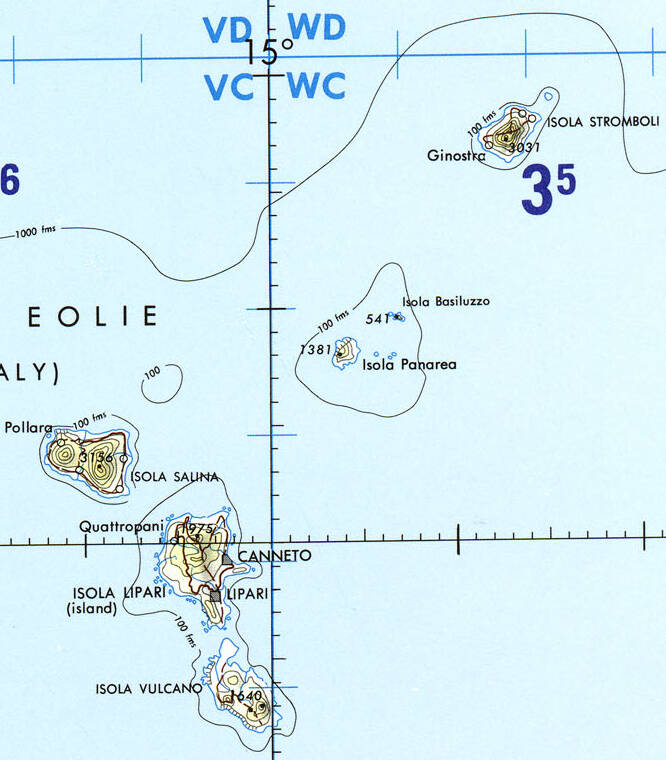
Portion of aeronautical chart TPC G-2B from the Perry-Castañeda Library Map Collection at the University of Texas at Austin. Pay no attention to what appears to be a road connecting Ginostra to Stromboli town. There is only a rather arduous path up and over the 926-meter-high peak of the volcano. In Stromboli you see Bergman's character try and fail to make that trek.
Around Stromboli to Ginostra
You can't walk around the island by following the beach, because there is no beach outside the main town. The conical slope goes right down into the sea.


Viewed from the south, the surface is largely eroded ash and cinder deposits.

Only around forty people live in Ginostra. There are no motor vehicles. Until 2004, there was neither running water nor public electrical power in Ginostra.

Now there is an array of photovoltaic panels near the village, plus a few small diesel generators. But at night, Ginostra is even darker than the main town.
A new central water tank is replenished by ship and collected rainwater.
There is limited accommodation for visitors in Ginostra. Five or six people got off and on during our brief visit. The pier was built in 2004, part of the project to build the solar power array and install the water tank.

Panarea
Panarea is the smallest of the seven inhabited Aeolian islands.

Lipari
Lipari is the capital and largest island of the group. People lived here around 5,000 BCE during the Neolithic period, collecting and trading the obsidian found here. A large quarry now extracts other minerals.

Mycenaea
Mycenaean Greeks settled here around the end of the third millennium BCE, in the early Bronze Age. They were of the Aeolian tribe of ancient Greeks, leading to all these islands being called the Aeolian group.

Greek colonists from Knidos, in south-western Asia Minor, arrived here around 580 BCE.

Then it was the standard sequence of Phoenicians out of Carthage, then the Romans arrived around 250 BCE, then Byzantine Greeks in the 5th century CE, and then Saracen pirates slaughtered most of the population in the 9th century CE. The Normans retook the island in the late 11th century.

From the 1920s into the 1940s, the Fascist government used these islands as political prisons.
Onward to Messina
My ferry made a brief stop at Vulcano, then continued to Milazzo. I had lunch near the ferry terminal there, then walked the easy 3.5 kilometer route to the train station. A regional train took me on to Messina.

Where Next In Italy?
( 🚧 = under construction )
In the late 1990s into the early 2000s I worked on a project to
scan cuneiform tablets
to archive and share 3-D data sets,
providing enhanced visualization to assist reading them.
Localized histogram equalization
to emphasize small-scale 3-D shapes in range maps, and so on.
I worked on the project with Gordon Young,
who was Purdue University's only professor
of archaeology.
Gordon was really smart,
he could read both Sumerian and Akkadian,
and at least some of other ancient languages
written in the cuneiform script.
He told me to go to Italy,
"The further south, the better."
Gordon was right.
Yes, you will very likely arrive in Rome,
but Italy has domestic flights and a fantastic train system
that runs overnight sleepers all the way to
Palermo and Siracusa, near the western and southern corners
of Sicily.
So, these pages are grouped into a south-first order,
as they should be.
